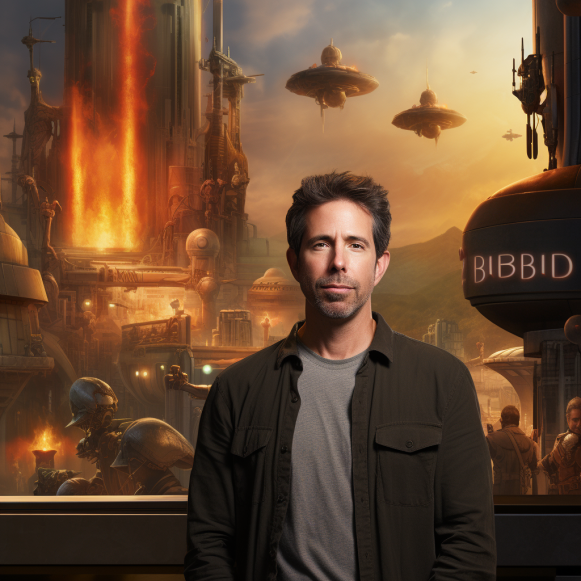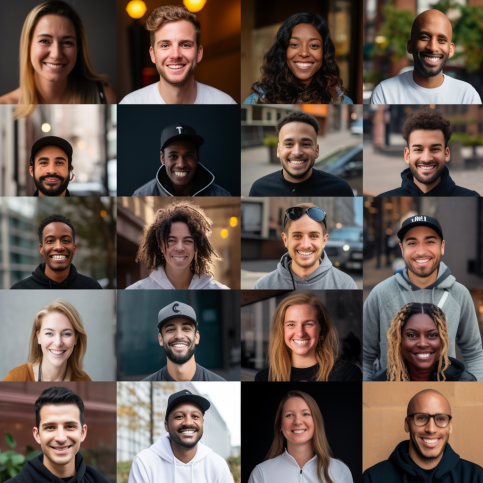Hollywood is building a $100 billion love-hate relationship with AI. Here’s what’s ahead, according to the top creative exec at ‘Star Wars’ VFX shop Industrial Light & Magic.

- Artificial intelligence and machine learning are increasingly impacting Hollywood filmmaking.
- Rob Bredow, Industrial Light & Magic’s chief creative officer, explained where the innovation’s going.
- Bredow — a key voice in the booming space — was named to Insider’s inaugural AI 100 list.
For more than 40 years, Harrison Ford has donned the fedora and cracked the whip as the daring tomb-raider Indiana Jones.
“Indiana Jones and the Dial of Destiny,” the latest installment in the series, is based on Greek myths about a device that can supposedly turn back the hands of time. But that’s fiction, and when production on “Dial of Destiny” began two years ago, 79-year-old Ford and the filmmakers faced a real-life challenge: how to actually turn back the clock and make the veteran Hollywood actor appear decades younger.
Moviemakers have previously faced the challenge of convincingly looking younger. Previously, pulling it off meant relying on shaky solutions that left visual-effects experts scratching their heads. According to Rob Bredow, chief creative officer of Industrial Light & Magic, who was named to Insider’s inaugural AI 100 list in October, recognizing 100 transformational voices in the artificial-intelligence community.
Producers on “Dial of Destiny” used a special camera to film the “Indy” star’s every move to make him look like a sprightly, more youthful version of himself, according to Bredow. The studio used generative artificial intelligence to create a “face-swapping” VFX procedure that saved Ford from having dozens of small “markers” applied to his face, which is a common feature of the de-aging process. The end result? Indiana Jones appeared to be several generations younger, which was ideal for the film’s opening sequence, which takes place during World War II.
“We had a fantastic reference that we could use for these machine learning-based models to learn from,” said Bredow, who also serves as Lucasfilm’s senior vice president of creative innovation, referring to the studio’s years of tape of Ford playing the character of Jones. “The quality of the work has gotten better, but also minimizing the impact to the performer and the camera crews and the rest of the team on set has been a real area of innovation for us and helped us move a lot faster.”
Compare that to the de-aging process on “The Irishman,” a 2019 Netflix film starring actors such as Robert de Niro, Al Pacino, and Joe Pesce, for which ILM handled the visual effects. Bredow estimated that cameramen lugged more than 50 pounds of equipment for that film, “to make sure we could capture all the detail we needed to create that likeness.” The process has been streamlined in just a few years.
ILM — a division of Lucasfilm that also produces “Indiana Jones” — was founded in 1975 by celebrated “Star Wars” creator Geroge Lucas and is at the forefront of this new Hollywood frontier. Bredow is a well-known name in the visual effects industry, having worked on films such as “Solo: A Star Wars Story” and “Ready Player One.” ILM’s films have received 16 Academy Awards and have been nominated for 50 more, as well as numerous Emmys and BAFTAs.
Bredow has emerged in Hollywood as a sort of senior statesman at the intersection of AI and filmmaking — a contentious space that contributed to the recently ended writers’ strike and the ongoing actors’ strike. Members of the Writers Guild of America and SAG-AFTRA, the actors’ union, have been outspoken critics of artificial intelligence, warning that digital brains threaten to supplant or replace human ones, jeopardizing their creative crafts.
However, Bredow is optimistic about the future of AI and machine learning innovation. He spoke with Insider about the changes in this field that he believes will have a significant impact on the entertainment industry, as well as the opportunities for growth that he is most excited about.
Artificial intelligence in entertainment is expected to be a $100 billion industry.
According to a Grand View Research report from last year, the market for AI in media and entertainment is expected to grow to nearly $100 billion by 2030. Bredow pointed to ILM’s internal research and development team, which generates prototypes and experiments with techniques to improve the efficacy of machine-learning algorithms.
One of the team’s most significant accomplishments, according to Bredow, has been shortening the time it takes filmmakers to implement these tools. “In the past, using digital tools to replicate the likeness of a person was a process that required a contingent of artists and could take six to 12 months,” he said. However, as technology advances, that timetable has shrunk to just a few weeks for a rough-quality approximation of a person.
He provided another example of how technology is influencing studio casting decisions: when evaluating multiple potential stunt doubles, producers can now use automated tests to determine which one would “play best” on camera while impersonating one of the actors in the film.
Previously, adding visual effects was almost entirely relegated to the post-production stage, according to Bredow: “You’d cast the person who was great at doing the stunt and you thought had the right likeness, and then in the end you find out how well it works or how well it doesn’t work, and how much fixing you have to do in the post-production process.”
Even though technology has advanced significantly, he noted that there are still areas for improvement.
Bredow is making significant progress in the face-swapping arena, as well as in the development of basic characters that can interact with audiences during live shows or with users on their phones. Another area where technology is progressing rapidly, he said, is in creating aesthetic digital environments “without artists having to hand-create every panel of glass and every brick” — for example, in a background.
How can AI and the creative community coexist?
While AI technology is beginning to reach ordinary consumers, with social media users sharing AI-enhanced photos of themselves in fanciful outfits or garb like astronaut suits, the tools used by Bredow’s team are primarily confined to studios with deep pockets for the time being. However, Bredow envisions a future in which they will assist at-home creators on platforms such as YouTube in improving their content.
Nonetheless, these tools have caused significant division and consternation within the creative ecosystem, with some fearing that digitization will encroach on their craft or livelihood. Bredow believes that it is not a zero-sum game in which humans lose while robots or computers gain.
Producers are excited that these tools will enable on-screen talent to tell stories that they could not have imagined just a few years ago, he added. He sees evolution as the next chapter in an age-old story of progress, rather than a threat. “Sometimes people ask me, ‘Do you think some of these new techniques are going to replace movies?” that’s what he said. “I always point out that even VHS or DVDs didn’t replace the movie theater.”
“What’s really important to us is to put these tools in the hands of artists who are using them to create higher-quality workflows” and also “that this is done with a high degree of care for the artists who are actually powering these processes,” Bredow said. “Whether that artist is someone painting on a workstation and creating some of these performances digitally, whether that artist is the person in front of the camera — those artists’ performances need to be respected.”






